[ad_1]
Observed lanternflies (Lycorma delicatula) are invasive, winged bugs which might be inflicting essential hurt to agricultural crops and fields. So, what does that indicate in your yard yard?
While you’re in Pennsylvania, New Jersey, Delaware, or Maryland, you’re already acquainted with this invasive species. While you’re in a neighboring state, sadly, it’d solely be a matter of time sooner than they’re in your step.
At any time when there’s a model new invasive pest on the scene, there’s a great deal of hubbub and concern amongst gardeners, and for good motive. Fortuitously, these bugs aren’t that large of a deal on a yard yard scale, though it’s nonetheless very important to deal with them accurately.
These pests have a novel look that makes them easy to ascertain, and the steps you’re meant to take in your yard must you see them aren’t too troublesome, each. We’ve gathered all the information it is important ID and deal with seen lanternflies inside the yard.
What Are They
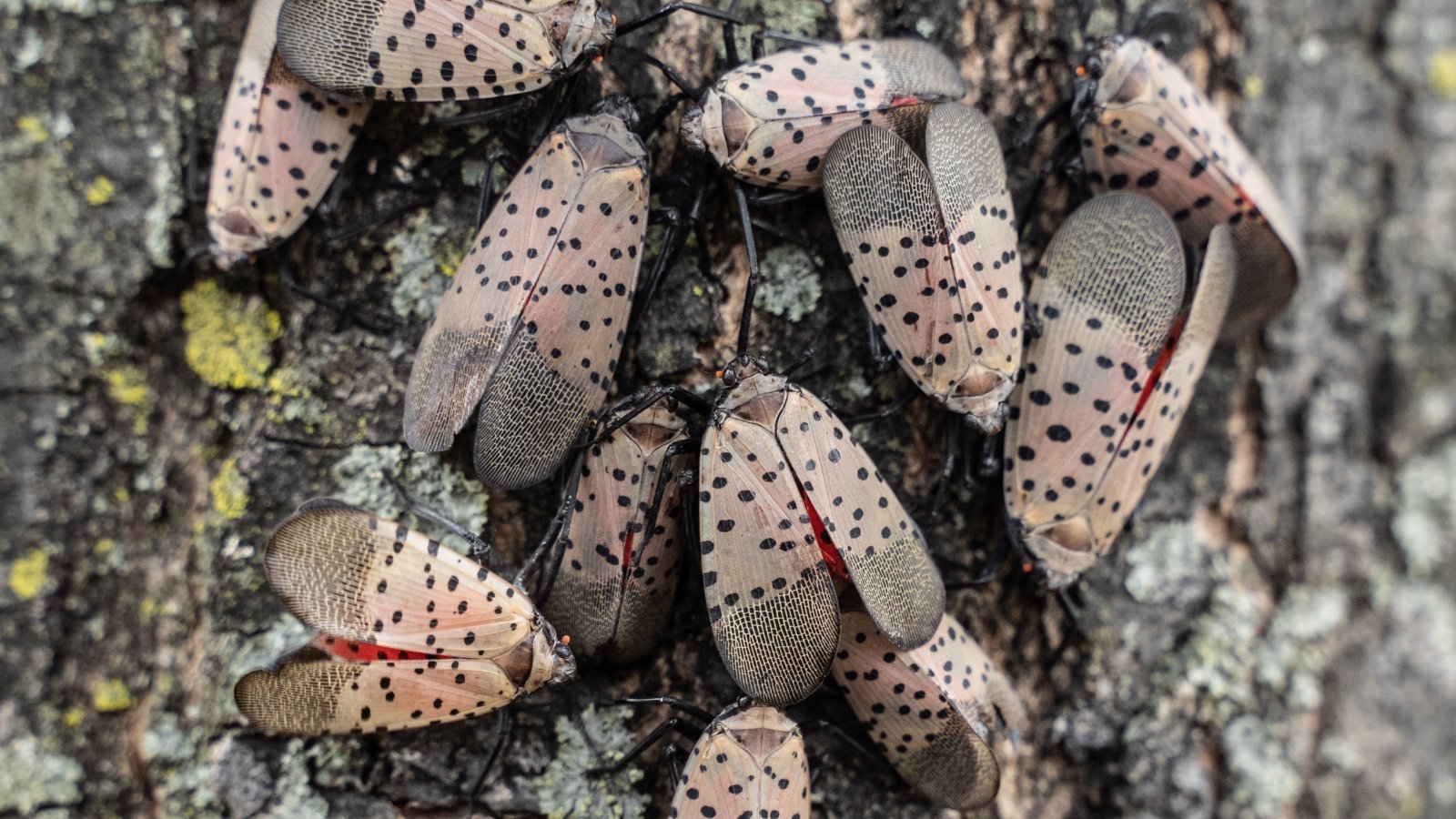

Sooner than we discuss the way in which to ascertain and deal with seen lanternflies inside the yard, let’s focus on a bit bit about this insect’s historic previous in america, its impression on crops, and the severity of the issue.
Whereas seen lanternflies are fully invasive and problematic, it’s very important to note up entrance that they do not pose a hazard to people or pets. Though they’ll set off essential crop yield loss on an agricultural diploma, their feeding would not kill crops—furthermore grapes.
The first detection of these pests in america was in 2014 in Berks County, Pennsylvania. They’ve unfold by the use of loads of Pennsylvania, all of New Jersey, all of Delaware, most of Maryland, and all by the neighboring states, as far west as Illinois.
Cornell Faculty is providing an updated map of seen lanternfly sightings by county. You could use this map to see if these bugs are in your neck of the woods or are approaching.
These bugs are native to China and Vietnam. No matter an preliminary quarantine in Pennsylvania, they unfold to neighboring states and proceed to take motion. Explicit individual states attempt their very personal quarantines and have completely totally different legal guidelines to battle the unfold.
For dwelling gardeners, these lanternflies are further of a nuisance than an actual disadvantage. They feed on plant phloem (sap), a comply with that does not kill crops by itself. However, it could effectively severely hurt crops, stunting their progress and leading to sickness.
Every the adults and nymphs suck the sap from plant stems and trunks. They feed on many alternative sorts of crops, along with sorts of apples, stone fruits, oaks, and pines. The accidents from this course of make crops further liable to sickness and pathogens, and if there’s enough hurt to the tissue, it could effectively stunt progress.
Furthermore, seen lanternflies produce honeydew, equivalent to aphids. “Honeydew” refers to a sticky, sweet waste that these bugs go away behind. It every attracts totally different pests and leads to sooty mildew, a fungal sickness that inhibits photosynthesis, moreover stunting progress.
Honeydew moreover attracts wasps. While you’ve bought a giant infestation of these invasive bugs, tread flippantly to stay away from wasp stings.
Observed lanternflies like to every eat and reproduce on tree-of-heaven (Ailanthus altissima), which is one different invasive species that has already unfold all through loads of the USA. Eradicating tree-of-heaven out of your land is further very important than ever as a result of it appears to be a favorite breeding flooring for this invasive species.
Phrase that whereas these bugs have piercing mouthparts that permit them to entry plant sap, they do not chunk or sting. They are not venomous, and there is in the intervening time no proof that reveals they’re poisonous to canine or cats.
Though these invasive bugs obtained’t indicate certain demise in your yard and obtained’t harm you, your family members, or your pets, it’s nonetheless important that we do what we are going to to ascertain and deal with them. Invasive species could also be harmful to the setting, the monetary system, and far more if left unchecked.
Decide
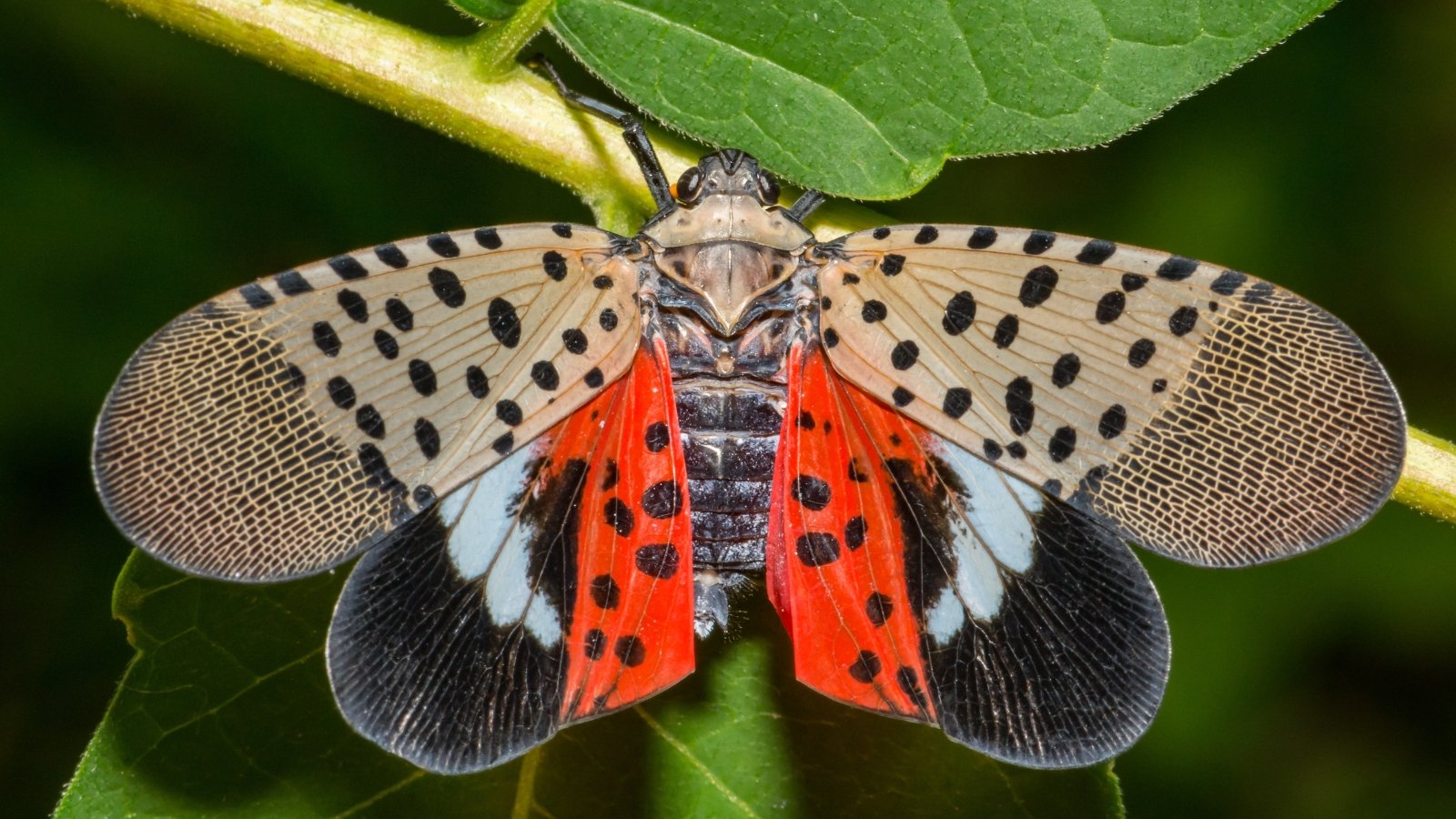

Observed lanternflies are fairly distinct-looking and easy to ascertain. However, they’ve three foremost life cycle stages (early nymphs, late nymphs, and adults) whereby they offer the impression of being completely totally different. That it’s essential to know what they appear like at each stage to have the flexibility to ascertain this invasive pest.
Their widespread determine should not be very helpful. Though they’re always seen, they do not resemble flies. Their large wings are far more very similar to the appears to be like of a moth than a fly. Furthermore, they do not gentle up like a lantern. The phrase actually refers to their prolonged sap-sucking snouts, which are generally known as “lanterns.”
Upon hatching, these bugs are considered early-stage nymphs. The immature nymphs have black our our bodies with white spots, they often’re about ¼ inch prolonged. This stage is most prevalent in spring and in mid-summer, between April and July.
There are actually plenty of sub-stages of early-stage nymphs, nevertheless they’re all black with white spots. These early-stage nymphs are often mistaken for ticks as a consequence of their significantly rounded look and small dimension.
Late-stage nymphs change shade. They’re now largely purple, instead of black, sustaining their white spots. You may greater than doubtless uncover late-stage nymphs in July and all by the summer time season, into September. These nymphs are about ¾ inch in dimension nevertheless have not however reached a full inch in dimension.
Lastly, they evolve into grownup lanternflies. You may even see this stage as early as July and as late as November. Now about an inch prolonged, the bugs have developed two items of wings. Prolonged outer wings cowl their inside wings and our our bodies. The outer wings are barely gray or gentle pink in shade, with half lined in black dots and half lined in a brick pattern.
The interior wings have patches of purple, white, and black. They’ve the equivalent shade of purple that was present on the our our bodies of the late-stage nymphs. Their legs and heads are black, whereas their abdomens are yellow with black stripes.
With so many layers of colors and patterns, they’re very distinctive. Phrase that, usually, you’ll discover them with their outer wings folded over their backs, masking a great deal of the small print. If the wings are expanded, they’re about two inches huge.
Furthermore, you may also want to maintain a watch mounted out for his or her egg heaps. Grownup females lay eggs largely inside the fall. The egg heaps overwinter, and the next know-how hatches in spring. Chances are high you will uncover them on any flat flooring, from a tree to outdoors furnishings.
They lay their eggs in 1-inch rows, and the eggs have a muddy-looking masking that conceals them barely. Over time, the “mud” dries out and cracks, in order that you would probably see the exact eggs beneath. Counting on the color and texture of the ground these egg heaps are linked to, they might be obvious or fully camouflaged.
With the knowledge of what they appear like the least bit phases, along with their egg heaps, it’s good to be able to set up seen lanternflies merely. While you uncover sooty mildew in your crops, this may moreover level out that the invasive bugs are spherical.
Deal with
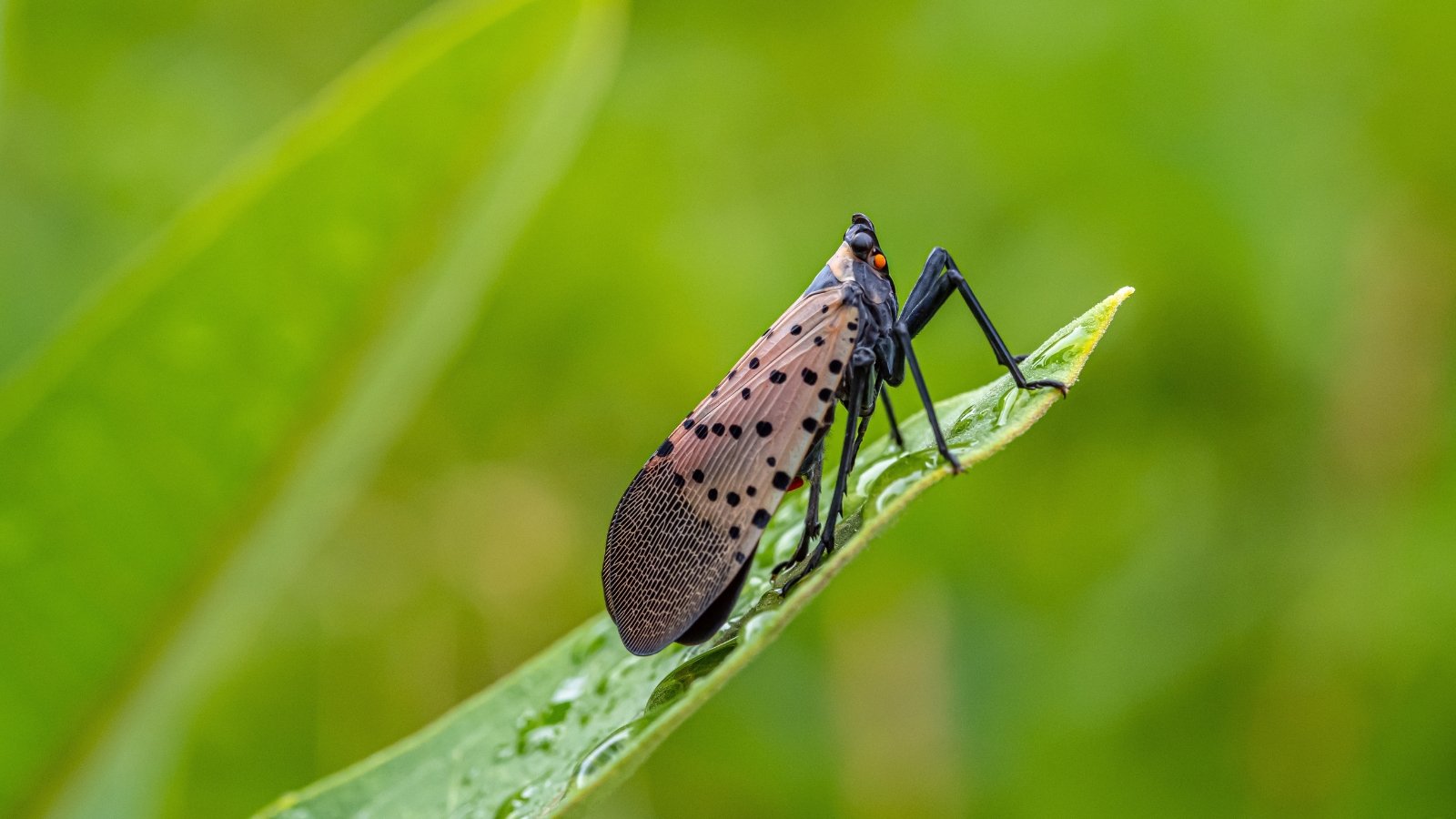

While you see seen lanternflies in your property, report it. Evaluation easy methods to take motion in your specific state. Most states have cellphone numbers or on-line belongings that make it easy to report these invasive bugs. This can be a very important step that allows native authorities to hint the unfold.
Subsequent, don’t panic. Remind your self that these flying bugs can’t injury you and usually solely set off minimal hurt to crops. Whereas it’s very important that you simply simply report and take care of them accurately, there isn’t any such factor as a set off for alarm.
In your gardens and inside your yard, specialists advise that you simply simply bodily kill any seen lanternfly populations that you could be merely attain. In another case, go away them be, and hope that pure predators do their job.
You could step on them with sneakers or crush them in your palms, ideally whereas sporting gloves. If destroying them on this implies makes you uncomfortable, you can catch them and put them in a glass of soapy water or rubbing alcohol, which can even kill them.
While you see an egg mass, you can manually crush it. You can also scrape it off the ground and submerge it in a bag of rubbing alcohol, which is ready to kill the eggs.
Do not spray infestations, crops, or outdoors surfaces in your yard with pesticides, chemical substances, or dwelling remedies like white vinegar. Merely put, it obtained’t make a dent inside the seen lanternfly inhabitants, however it will harm helpful bugs, along with pollinators and potential seen lanternfly predators.
In precise truth, natural administration is an important instrument in direction of these bugs. Spiders, praying mantids, birds, and further will eat these pests. It’s very important that we don’t harm these pure predators in our attempt to handle their prey.
Whereas it is perhaps tempting to take an aggressive technique in direction of this invasive pest, they’re merely not very important enough to hazard the hurt to helpful wildlife. It’s moreover unlikely to be very environment friendly at stopping such a vigorous insect.
While you uncover them in your ornamental crops or edible crops, you can try spraying them with a harsh stream of water. You can also try setting up a circle entice, as detailed by PennState Extension. You could even use a retailer vacuum to suck up the bugs after which discard them.
To protect vulnerable yard crops, notably grapes, cowl them with efficient mesh netting. Make sure the netting is secured alongside the sides, in another case the bugs may obtain entry.
In another case, do what you can to produce splendid circumstances in your crops. Guarantee they’re getting enough daylight, water, and nutritional vitamins. Carry on prime of one other pest and sickness factors that emerge. Healthful crops will put up a higher battle in direction of the invasive seen lanternfly.
[ad_2]
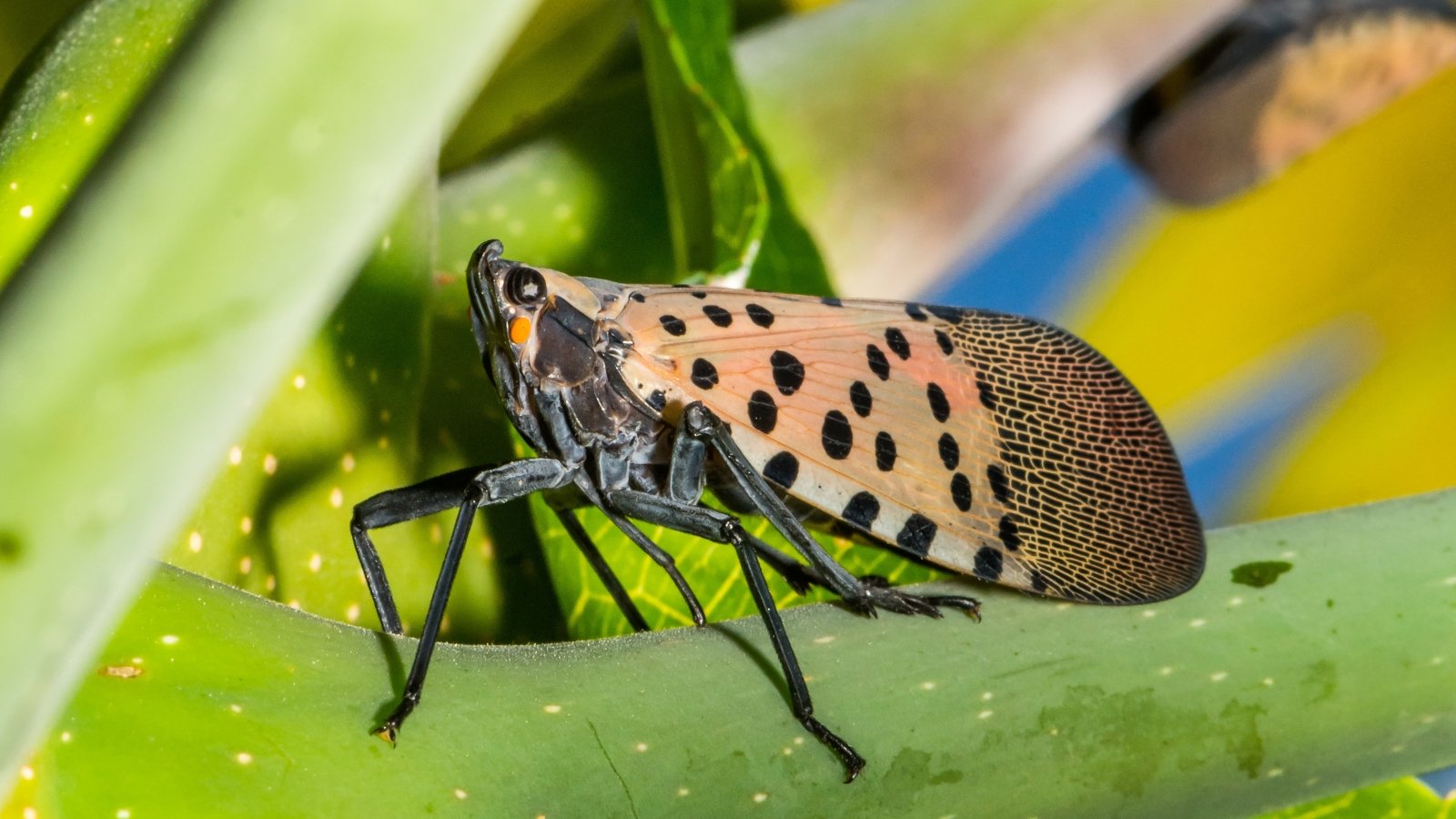
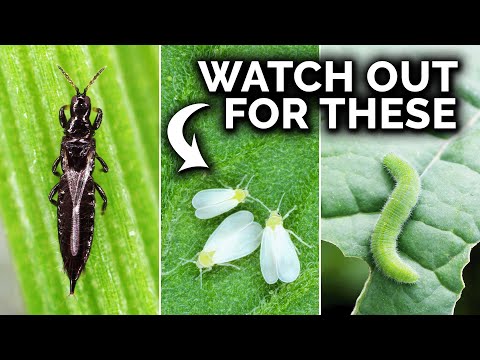
It’s good to see practical steps outlined for managing these pests without resorting to pesticides. Encouraging people to physically remove them or use natural means is a more sustainable approach and can lead to better long-term results.
The information on natural predators was particularly interesting. It’s a reminder that we should prioritize ecological balance when dealing with invasives like the spotted lanternfly, rather than resorting to harmful chemicals that can affect beneficial wildlife.
This article provides a comprehensive overview of the spotted lanternfly situation. It’s important to stay informed about invasive species and their impact on local agriculture. Regular monitoring could really help in managing their presence effectively.
I appreciate the detailed identification guide included here. Knowing what to look for at each life stage will be helpful for anyone dealing with these pests in their gardens. Education is key in prevention efforts.
This article emphasizes the importance of reporting sightings, which can help track the spread of these insects. Community involvement is crucial in addressing invasive species issues effectively, and I hope more people take this advice seriously.